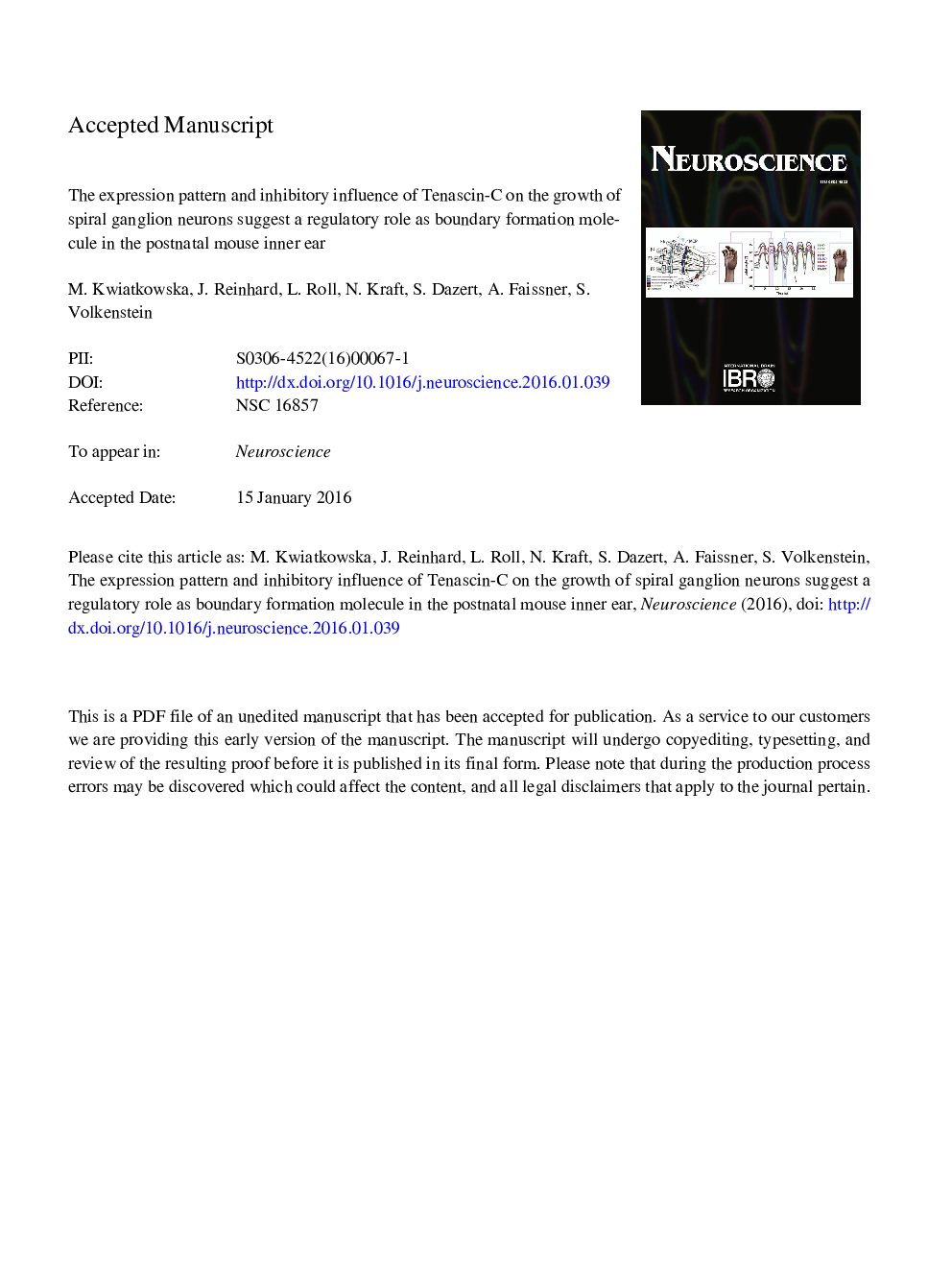| Article ID | Journal | Published Year | Pages | File Type |
|---|---|---|---|---|
| 6271373 | Neuroscience | 2016 | 49 Pages |
Abstract
In sum, our in vitro data suggest that TN-C acts as an anti-adhesive and inhibitory factor for the growth of SGNs. The DSD-1 carbohydrate epitope is specifically localized to HC stereocilia and SG fibers. Interestingly, TN-C and the DSD-1-PG exhibit a mutually exclusive expression pattern, with the exception of a very restricted region beneath the habenula perforata, where SG neurites grow through the basilar membrane (BM) toward the HCs. The complementary expression of TN-C, LN, FN, and the DSD-1 epitope suggests that TN-C may act as an important boundary formation molecule in the developing postnatal mouse inner ear, which makes it a promising candidate to regulate neurite outgrowth in the light of CIs.
Keywords
ECMPBSneurofilament-200NF-200NT-3DAPIPBTCSPG4,6-diamidino-2-phenylindoleBDNFBSAbovine serum albuminEDTAEthylenediaminetetraacetic acidorgan of Cortimesothelial cellhair cellbasilar membraneBrain-derived neurotrophic factorFibronectinLamininExtracellular matrixPhosphate-buffered salineneurotrophin-3Cochlear implantchondroitin sulfate proteoglycan
Related Topics
Life Sciences
Neuroscience
Neuroscience (General)
Authors
M. Kwiatkowska, J. Reinhard, L. Roll, N. Kraft, S. Dazert, A. Faissner, S. Volkenstein,
